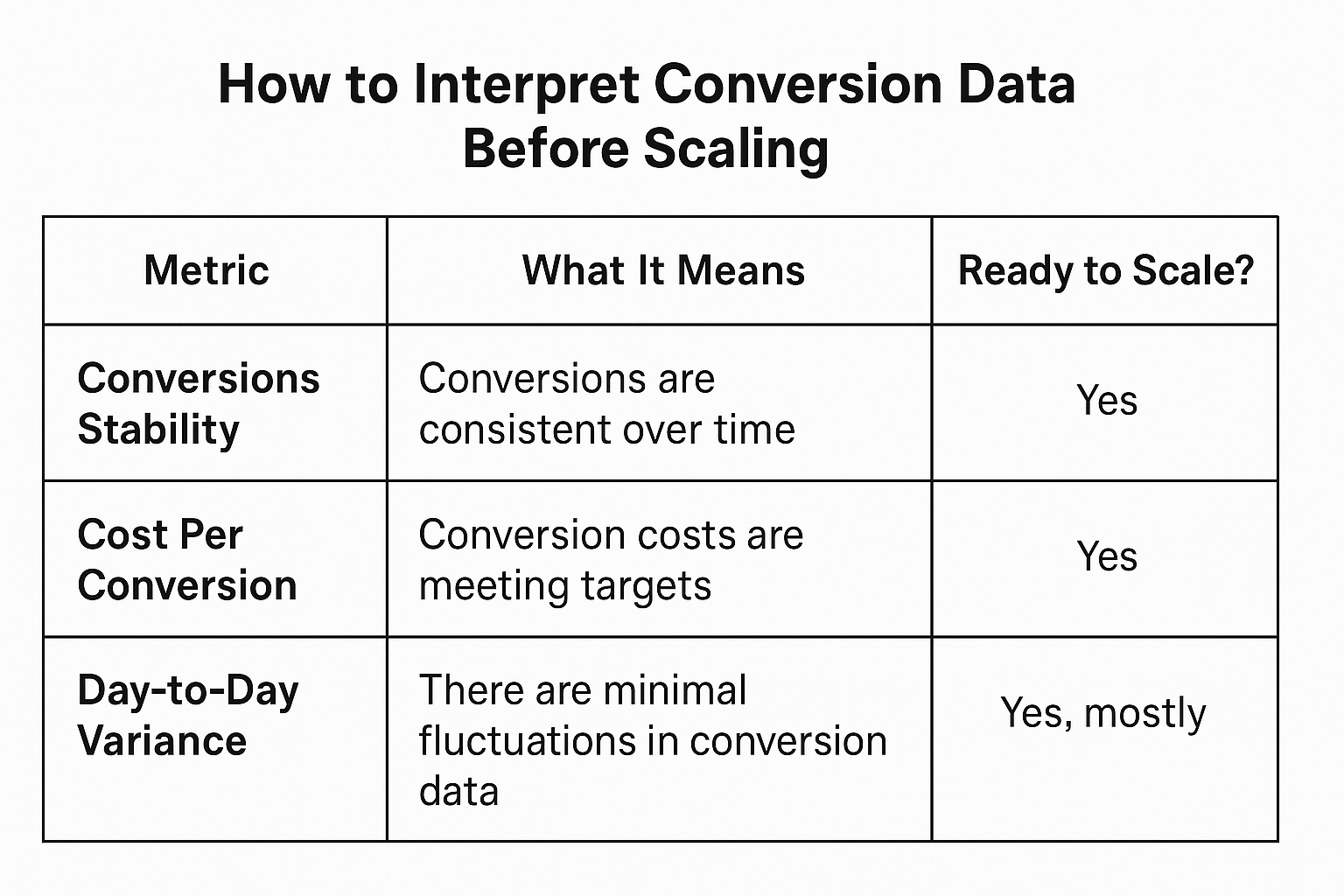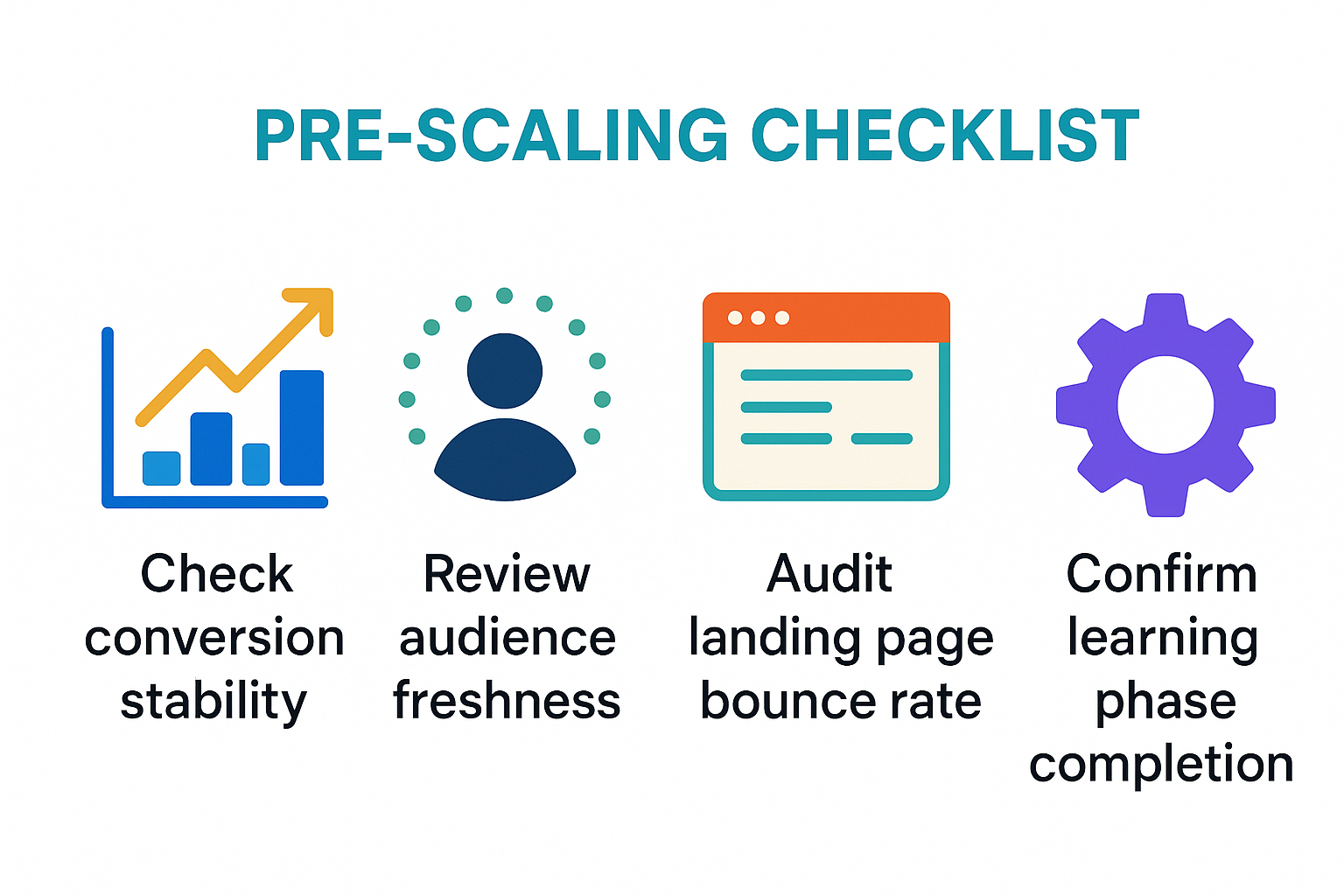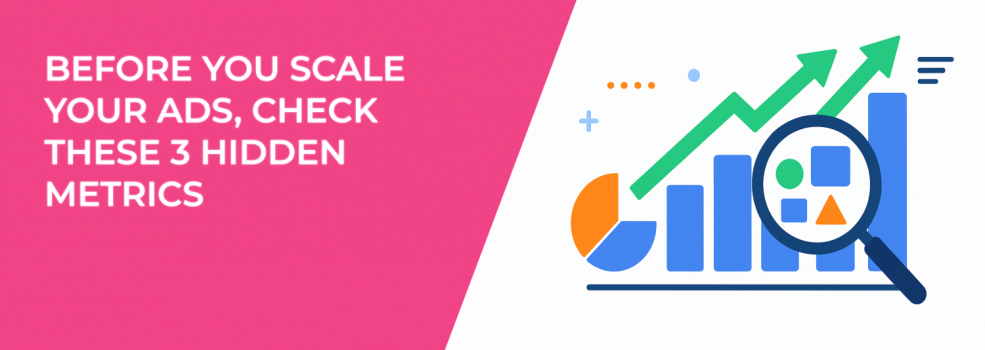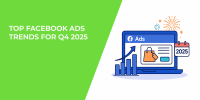Thinking about scaling your Facebook or Instagram campaigns?
Before you do, take a step back. Scaling without real performance insight is one of the most common reasons campaigns crash — especially in competitive regions like the U.S., UK, Canada, and Australia where CPCs are already high.
Many marketers get excited once their cost-per-result looks decent or their ROAS turns green. But surface-level metrics can be misleading. That “winning” ad set? It might not survive the pressure of a bigger budget.
To scale successfully, you need to look beyond the basics. That means digging into the hidden Facebook ad metrics that quietly signal whether your campaign is truly ready to grow — or headed for burnout.
1. Conversion Volatility — Are You Scaling a Fluke?
Conversions are exciting — but only if they’re consistent. A single great day doesn’t mean you’ve cracked the code. If you're scaling a campaign that isn't stable yet, you're setting yourself up for unpredictable results.

Look at your performance over 7–10 days, and pay attention to:
-
Conversion cost trends — Is the cost per conversion creeping up midweek?
-
Daily volume swings — Are you seeing 3 conversions one day, then 13 the next?
-
Time-of-day spikes — Are most conversions happening in short time windows?
These signs can mean your ad is only performing under certain conditions or is benefiting from a narrow audience window.
Need a deeper dive on how to prepare your campaigns for stable scaling? Read: The Science of Scaling Facebook Ads Without Killing Performance.
Avoid scaling until your conversion patterns are stable. Use 3-day or 7-day rolling averages to confirm — especially when you're spending in cities with high media saturation like New York, London, or Sydney.
2. First-Time Impression Ratio — Are You Reaching Anyone New?
If you increase your ad spend and your cost per result goes up, your audience might be too small — or too tired. That’s when ad fatigue sets in. Your CTR tanks, and Facebook’s algorithm punishes you with worse delivery.
That’s why you should monitor your First-Time Impression Ratio (FTIR) — it shows the percentage of people seeing your ad for the first time.
What to look for:
-
Above 75% — You’re reaching fresh eyes.
-
Between 50–75% — You’re nearing saturation.
-
Below 50% — You're likely recycling the same users.
To scale effectively, you must reach new segments. If your FTIR is low, it's a sign to either refresh creatives or explore broader targeting. Here's where tools like lookalike layering or custom audience exclusions can be game-changers.
Learn the fundamentals of building audiences that scale properly in Facebook Ad Targeting 101: How to Reach the Right Audience.
3. Landing Page Bounce Rate — Are You Losing People Post-Click?
One of the biggest mistakes advertisers make is focusing only on in-platform metrics. But scaling doesn’t just send more clicks — it amplifies weak landing pages. If your bounce rate is high now, it’ll get worse with volume.
Here’s what to inspect:
-
Does the page load in under 3 seconds on mobile?
-
Is your message aligned with the ad promise?
-
Are your CTAs instantly visible and easy to tap?
Use Google Analytics, Meta’s Events Manager, or heatmapping tools to evaluate:
-
Bounce rate — Over 60%? That’s a warning.
-
Scroll depth and time on page — If users aren’t reading, they’re not converting.
Struggling to identify conversion blockers? Our article Facebook Ads Not Converting: How To Fix It breaks down the most overlooked issues.
If your post-click experience is underperforming, fix it before scaling. Otherwise, you're sending traffic into a leaky funnel — and paying dearly for it.
Bonus Insight — The Learning Phase Still Matters
If you’re scaling too early, you may also reset your campaign’s momentum and send it back into the Learning Phase, where Meta’s algorithm starts guessing again.
Want faster stabilization? Check out How to Finish the Facebook Learning Phase Quickly for practical optimization tips.
And if your ad delivery suddenly slows or stops altogether after scaling, it might not be your strategy — it could be a delivery issue.
Final Takeaway — Don’t Let Metrics Fool You
When you’re ready to scale your Meta ads, remember: your biggest risk is assuming you’re ready too soon. Dig deeper than surface KPIs.

- Look at conversion stability.
- Track your first-time impression ratio.
- Evaluate landing page performance beyond the click.
- Understand the learning phase and how to get through it quickly.
Scaling profitably requires more than a good ROAS. It demands awareness of the whole system — from ad creative to audience health to what happens after the click.
Do the hidden metrics check first. Then scale with confidence.

